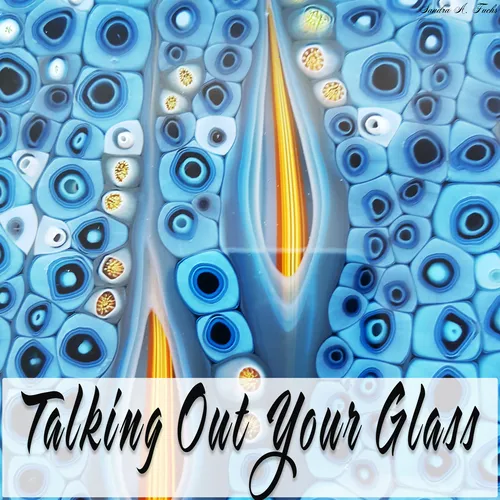Richard Prigg: Celebrating the Textures, Colors, Voices of his Materials
- Author
- Shawn Waggoner
- Published
- Wed 13 Aug 2025
- Episode Link
- http://www.talkingoutyourglass.com
Author and architectural glass artist Robert Sowers wrote that lead should be considered a design element and not just a matrix to hold stained glass. That idea spoke to Richard Prigg, who has developed a body of work that celebrates lead and solder as much as it does breathtakingly beautiful glass. Though historically stained glass windows conveyed the teachings of the church, Prigg’s work intentionally tells no stories, but rather impacts the viewer by combining more expressive lead work with various light-modulating elements of and beyond the window itself.
States Prigg: “I have an aversion to storytelling. I feel that it can often move the viewer away from the work so that instead of observing and considering what is in front of them, they fly off to the never-never land where the story takes them. Of course, I recognize that storytelling is an integral part of being human. We tell stories to one another to help define our identities. The stories in our culture give us a we that can guide our ways of living. But there is a dark side of storytelling, and it is intrinsic to the spoken word. It is our human tendency to use story to deceive. So, I am distrustful of art with a story, because a story can be a lie. I am distrustful of religion with a story, too. Religion and art – they are such good friends.”
A graduate of the Pennsylvania Academy of Fine Arts, Prigg started his career at Beyer Stained Glass, Philadelphia, Pennsylvania. He later joined Willet Hauser Architectural Glass, the largest stained glass studio in the US, where he served as General Manager from 1999 to 2011. There, he oversaw challenging projects such as restoration of the Alcuin and Charlemagne and The Death of Sir Philip Sidney windows, which included re-creating missing plates for areas of the windows where the glass had chemically decomposed. He also oversaw the creation of $3.5 million of gothic stained glass fabricated by Willet Hauser for St. Martin’s Episcopal Church in Houston. It was huge job that took 2.5 years to finish.
Says Prigg: “I worked closely with Crosby Willet, who was incredibly generous to me and taught me a lot about stained glass. He introduced me to everyone in the business more or less. That included Charlie Lawrence who became a mentor and friend as well.”
In December of 1999, Prigg left Willet Hauser and opened Sycamore Studios with his wife Ellen Lustgarten, where in addition to repair, restoration and new work, he developed a unique body of personal work featuring mouthblown antique sheet glass in conjunction with calligraphic lead lines built up with lead came. These works include Spin for a Western Light and Two Circles and a Dot. Later, he began to explore concrete as a matrix, resulting in works such as Blue Moon, Tossed and his recent Tower series. Prigg also uses his Lansdowne studio to showcase the work of young artists who often can’t get into galleries.
Prigg is a member of the Stained Glass Association of America and has served on the board of directors of the American Glass Guild (AGG). He is the recipient of two AGG AGNX Awards for Excellence in the Art of Stained Glass. In 2025, he presented From Artist To Artisan To Artist: How I Painted Myself Into a Corner and Escaped through a Stained Glass Window at the AGG conference. Recent exhibitions of his work include: 2025 at the AGG AGNX Show, Mesa Contemporary Art Museum, Mesa, Arizona; 2025, Juried Show: Vibrance at the Aston Mills Art Center, Aston PA; and the 2023 Juried Show: 100 Skulls, Aston Mills Arts Center. His work can be found in private collections in Philadelphia as well as at the Center for Emerging Visual Artists.
Says Prigg, about goals for his personal work: “When I began working with glass, I was so in love with these materials – lead and glass – that I just wanted to find ways to show people what delighted me. I wanted people to be presented with these materials in a way so that they would be engaged in the textures, the colors, the voices of the materials.”
